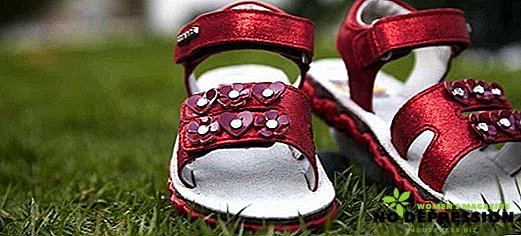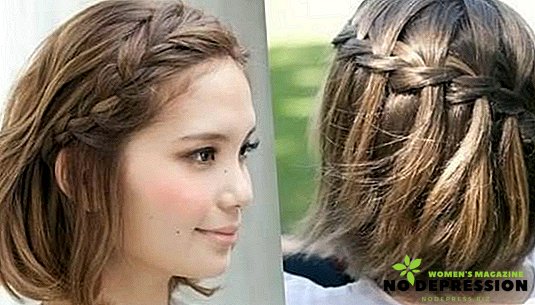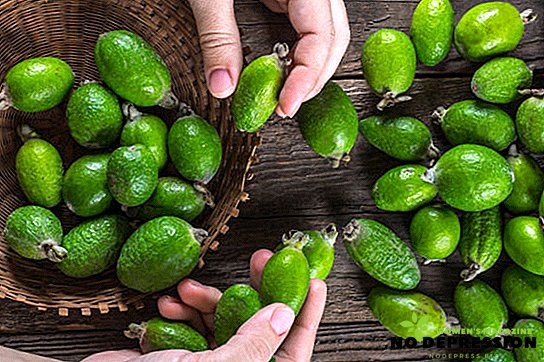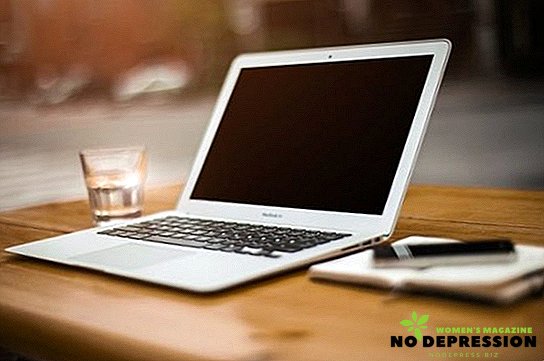Walking with a child, especially with a small one, shopping for buying clothes for him is quite difficult. The issue of determining the size of the shoes even sharper. On the shelves of shops you can find many models of beautiful children's shoes, which in appearance have exactly the same length, but at the same time - completely different markings.

Objectively, the child simply cannot independently assess the convenience of each pair, so it often does not make sense to take him to such long fittings.
Come to the aid of numerous tables on which you can determine the correct size of shoes for children. With the help of them, mothers can make good purchases on Internet sites or in ordinary shoe stores if they know some nuances.
How to determine size
Criteria for which children's shoes are divided, a great many. For boys and girls, teenagers or for kids, it’s quite difficult to navigate in such diversity even for a knowledgeable person, not like for an ordinary customer.
A novice buyer should know the following nuances to help buy the right size:
- A child under 3 years old will have to buy shoes every 3 months, it is during this period that their foot changes. After 3 years, the period must be increased to 4 months, from 6 to 10 years, the foot for a new shoe is measured every five months. This little secret will tell you how often you need to make a new dimension for a purchase.
- The foot of a child older than one year should be measured when he stands firmly on both legs. So the weight is distributed most evenly, affecting the foot and slightly increasing its normal size. Measurement should be done in the evening, when the leg is a bit swollen.

- To measure, place a sheet of paper under the child’s foot, and then draw outlines with a pencil. If possible, you can pre-wet the foot to get a wet print. Make measurements of both legs in this way, add them together and divide by 2 to get the mean meaningful. This figure will be the one on which you should focus on when buying. The only exception is the case when the child has one leg noticeably more than the other.
- When buying children's shoes, always add a small indent. For the summer, it should be about half a centimeter, for the winter one and a half, so that you can wear a warm sock. This will help the shoe stay comfortable, despite the swelling.
- It is impossible to measure the leg diagonally, the resulting figure will absolutely not reflect reality.
- It is desirable to determine the completeness when measuring the length in order not to buy too narrow a model and vice versa.
On the insole
Determining the size of the shoe on the insole is only suitable if the current shoe that the child wears feels very comfortable for him, and he has not yet grown out of it.
To determine the size is to measure the old insole. This option is considered the most optimal for finding out the exact length of the leg.
As a rule, foreign manufacturers put insoles in their children's models, which are one and a half centimeters longer than the actual length of a children's leg.
Size table of children's shoes in centimeters
In Russia, at the moment, the metric system is used, compiled according to the international standard. The calculated size corresponds exactly to the size of the foot, and then all the numbers are rounded to half a centimeter. The length is calculated from the edge of the protruding finger to the end of the heel; other corrections do not exist.
| Foot length (cm) | Shoe size |
|---|---|
| 9,5 | 16 |
| 10,5 | 17 |
| 11 | 18 |
| 11,5 | 19 |
| 12,5 | 20 |
| 13 | 21 |
| 14 | 22 |
| 14,6 | 23 |
| 15,2 | 24 |
| 16,5 | 26 |
| 17,1 | 27 |
| 18,1 | 29 |
| 19 | 30 |
| 19,7 | 31 |
It is impossible to determine the size of a child's age, since these values rarely coincide with real figures, therefore it is not recommended to focus on this indicator.
American table
American and English use calculations in inches. For the correct determination, a small shift towards zero by 2.1 mm is used.
| Size range | Foot length (cm) |
|---|---|
| 1 | 9,5 |
| 2 | 9,7 |
| 3 | 10,5 |
| 4 | 11,7 |
| 5 | 12,5 |
| 5 ½ | 12,9 |
| 6 | 13,4 |
| 7 | 14,3 |
| 8 | 14,8 |
| 8 ½ | 15,2 |
| 9 ½ | 16 |
| 10 | 17,5 |
| 11 | 18 |
| 12 | 18,5 |
Quite often, foreign companies have their own shoe sizes, so the different numbers of different brands may vary slightly. Therefore, when buying without first fitting, it is still necessary to measure the foot.
Sizing
There are a number of dimensions characteristic of different countries. That is why it is recommended to know the compliance of Russian sizes with European, English and American.
The Chinese and Russian systems are quite similar, so no additional numbers are required for them.
| Length | USA | European Union | Russian Federation | Great Britain |
|---|---|---|---|---|
| 9,5 | 1 | 17 | 16 | 0 |
| 10,5 | 2 | 18 | 17 | 1 |
| 11 | 3 | 19 | 18 | 1-2 |
| 11,5 | 4 | 20 | 19 | 2-3 |
| 12 | 5 | - | 19,5 | 3 |
| 12,5 | - | 21 | 20 | 4 |
| 13 | 6 | 22 | 21 | 5 |
| 13,5 | - | 23 | 22 | - |
| 14 | 7 | - | 22,5 | - |
| 14,5 | - | 24 | 23 | - |
| 15 | 8 | 25 | 24 | 7 |
| 16 | 10 | 27 | 26 | - |
| 17 | - | 28 | 27 | 9 |
| 17,5 | 11 | 29 | 28 | - |
| 18 | 12 | - | 28,5 | 10 |
The English dimension, like the American one, uses in its base inches. However, their score starts from zero, which is used for booties. In general, all sizes of children's shoes are measured by 2 systems: a magnetism and a metric, each of which is used according to the country of manufacture.
Metric is always based on centimeters and millimeters, so the size is determined only by the full length of the foot. The shtikhmassovaya system uses in its basis the shah, which measures not the foot length at all, but the insole. These systems should not be confused, since even the slightest difference can lead to a wrong purchase.
Tips for choosing good kids shoes
A child at a young age cannot independently tell his parents about tight shoes. Usually in babies this is accompanied by crying, which only annoys parents, but does not give answers to questions. Therefore, to determine whether the child’s shoes are cramped, you should follow a few rules:
- After putting the shoe on the child, be sure to inspect his leg, if there are small red spots on the toes of the foot or the baby is pressing in, then this may indicate cramped length or width. In a suitable footwear, the foot should not experience any deformations.
- When trying on, press on the toe of the shoe with your finger to check if there is additional space. Ideally, it should be about one and a half centimeters for the convenience of the baby.
- Quality shoes for a child should have a fairly solid heel that does not stretch when worn. The presence of an instep support is important, because without it there is a high risk of developing flat-footedness, and a small heel of a few millimeters. The sole must be sufficiently flexible, and the clasp be adjusted at the request of the owner to achieve the most snug fit.
- In childhood, the foot grows very quickly, so it is advisable to buy winter shoes with a margin of a couple of sizes in order to be able to wear a warm sock and with the growth of the foot.
- Try not to buy cheap dermantinovuyu thing, because the child is unlikely to be comfortable in it. High-quality shoes are distinguished by low weight and do not have a narrowed sock. The material must be natural, although at the moment there are a number of good substitutes created by high technology and not different from natural.
Before buying baby shoes should be carefully prepared. Children's foot grows very quickly, new shoes have to buy quite often. Many factors can influence leg growth, including genetic predisposition, complexion, growth.
That is why you should not focus on a very transparent and subjective table of the size of the child’s feet by age, but rather measure the foot along the length. It is the correct measurement will determine the desired size.
Proper use of the tables will help the mother and child make a quick and high-quality purchase, without counting a lot of pairs on the child in an attempt to find the right size. Such tables are standardly available in any store, so every buyer can use them, but in extreme cases they can be carried with them for convenience.













